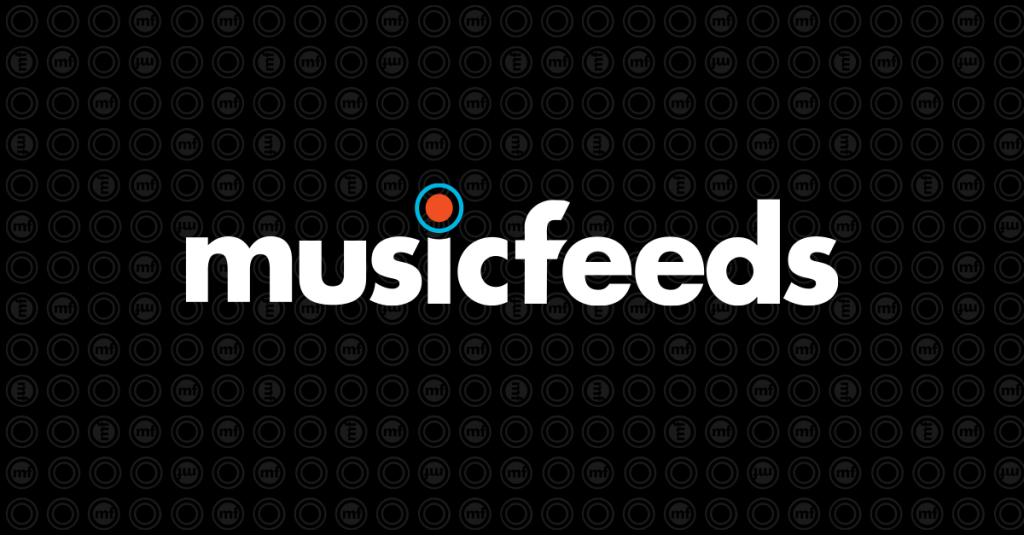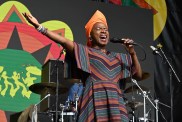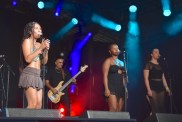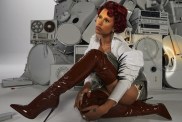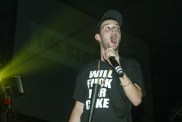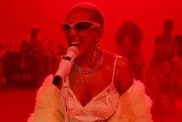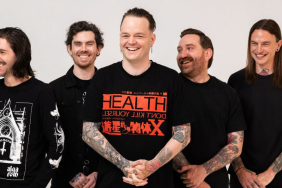If you want something done right, do it yourself, so the saying goes. Cameron Stallones, better known as Sun Araw is an artist who embodies this notion, even if under direct questioning he might not agree with it.
Starting out as a member of psych collective Magic Lantern, some demo recordings Stallones had intended to be used as fuel for the band ended up becoming the first Sun Araw LP. Recording all the music on his own in his crazed bedroom studio, as well as creating all the artwork, Stallones draws inspiration mainly from film and directors, especially those who are enamoured with the long shot such as Tarkovsky, Greenaway and Bela Tarr.
His music, like his inspirations, rely on length and draw out periods of examination and extrapolation from the audience and music respectively. To quote his Last Fm bio, he is “Devoted to long-form mantric music, the ethos is similar: straight lampin’ in deep focus, angle after angle on the melodic object, gaining strength from the subsequent breakdown of the illusion of fixed perspective.”
Making his way out to Australia soon as part of Sugar Mountain Festival touring with Prince Rama and dropping in to everyone’s favourite restaurant and danceteria GoodGod Small Club in January, we caught up with Stallones to discuss his creative process, how he approaches live performance as well as what he has planned for his Australian shows.
MF: So you put Ancient Romans out earlier this year; can you tell us about the album, how it compares to the rest of your work?
SA: Heartfelt and marbled. It’s a little cleaner, harder-edged than previous stuff.
MF: How do you guys tend to work when you’re writing?
SA: I record all the Sun Araw records by myself at home, starting from a place of improvisation and expansion. I try to remove all intentionality for the generative stage, and then flood it with intentionality in the adornment stage. But it’s important for me to at least try to reach out past immediate brain-states.
MF: You have an amazingly prolific output; do you ever stop working on music?
SA: No, not really. It gives me a huge amount of pleasure to work.
MF: Can you tell us a bit about the recording process itself?
SA: Oh man. I’ve developed my own little system with really busted gear. But it works for me. It’s all on the home-front, daisy chains of cassette decks and spring reverb.
MF: Have to ask as well, who does the art on your albums? They’re amazing.
SA: Thanks much, I do all the art myself. It’s a big part of finishing the project.
MF: So you guys are coming out again; I remember one of the last times you were here, you actually hosted Donny Benet’s debut performance; was that a proud moment for you?
SA: That was such a crazy show! Our plane was delayed and we rolled in so late, so defeated and tired. Then I look up and this gentleman is formidably ripping up this Moog Phatty. I was down.
MF: Speaking of the live show, can you tell me a bit about how you approach performance?
SA: The records are all recorded solo, and the live set is a translation of that into a band context. We do a lot of improvising and try to turn as many corners as possible. Keep everything as live as possible. Today, actually, I’m building a bunch of contact mics for our Australian setup, we’re gonna try some different ideas.
MF: What makes it a great show for you guys compared to a good show?
SA: Distance of personal transport. For me, playing live is very introspective, it’s always about trying to sort of create a certain psychological and spiritual space internally.
MF: Is that what you enjoy when watching other artists as well?
SA: FREQUENTLY YES. Though there are lots of other interesting reasons and methods of performance.
MF: I hear you might be doing a secret disco show or something while you’re out here? Please tell me it’s true.
SA: Alex (Heatwave) and I are supposed to DJ some late night disco party. It better be happening, I just spent all day ripping some smoking vinyl. Jazz-prog-disco-odyssey. Meet and greet with romance.
MF: If it did happen, what would it be like? Something like this?
SA: No no, no jokes. Just looking deep into 3 am inner bedroom eyes, and marathon dancing like you’re trying to get somewhere. You have to get there through the body.
MF: Anything coming up we should be keeping an eye out for?
SA: DPPY001, first Duppy Gun Prod. 12″ just dropped! The first of many outer-dancehall selections recorded in Portmore, Jamaica. I went down there to make a record with The Congos which is forthcoming, but got inspired by meeting so many talented people, and founded this label to be fertile soil for collabrotation. You can hear samples and grip a copy HERE.
